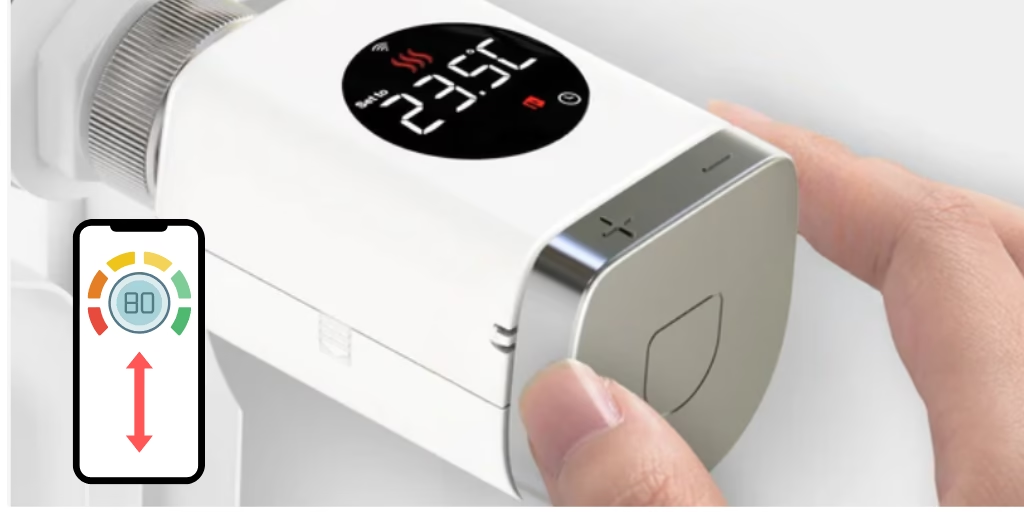Heating with Smart Thermostatic Radiator Valves: Practical Guide
Smart thermostatic radiator valves (or smart TRVs) are one of the easiest and most effective ways to gain better control over your home heating. They give you room by room temperature control, help reduce wasted energy, and can be controlled automatically or manually from your phone or by voice.
In this guide, we’ll cover what smart radiator valves are, how they work, how to install and set them up, and what to expect in daily use. Plus some tips and things to watch out for.
What is a Smart TRV
A smart TRV replaces the traditional thermostatic valve head on your radiator. It connects to a smart home system or app, allowing you to control the temperature of that radiator individually, remotely on a schedule or using automation.
They typically use wireless communication (Bluetooth, Zigbee, or Wi-Fi), and many are compatible with systems like Google Home, Amazon Alexa, or Apple HomeKit.
Key Benefits
- Room by room temperature control
- Set schedules per radiator or room
- Reduce energy bills by only heating the rooms you need. Configure with automations to make this fully automatic.
- Remote access, adjust heating from your phone
- Voice control
How Smart TRVs Work
- They measure room temperature with an internal digital sensor.
- Use a small electric motor to open or close the radiator valve.
- They receive commands from a central hub or app (e.g., “heat sitting room to 20°C at 7am”).
- Operate independently or as part of a zone based heating system.
They do not control the boiler directly (unless part of a full smart system), but they control whether a single radiator gets hot water when the heating is on.
What You’ll Need
- Compatible radiator valves (usually M30 thread or adapter may be required)
- A smart TRVs (e.g. Moes, tado°, Netatmo, Eve, Aqara, Shelly, Hive, etc.)
- A hub or gateway
- Smartphone with the relevant app
- Optional: Smart thermostat for full system control
Installation Guide
1. Check Compatibility
Most radiators use M30x1.5mm threaded valves, this is the standard. If you have a different valve (e.g. Danfoss, Drayton, Pegler), you may need an adapter. Please see understanding the different radiator valves for help selecting the right smart radiator valve for your radiators
2. Install the TRV
Screw the smart TRV onto the valve body (using an adapter if needed). Hand-tighten, do not overtighten with tools.
3. Pair with the App or Hub
Follow the manufacturer’s pairing process. This may involve scanning a QR code or pressing a button on the device to set it in pairing mode.
4. Assign the TRV to a Room
Label each TRV with its location in the app (e.g. “Living Room”, “Bedroom 1”). This makes it easy to identify zones.
5. Set Schedules
Create heating schedules based on your routine — e.g. heat the bedroom at 6:30am, turn down during the day. Many smart home systems support “geofencing” (adjust heating based on whether you’re home).
Tips for Best Performance
- Avoid blocking the TRV with furniture or curtains — airflow matters for temperature accuracy.
- Use external temperature sensors (if available) for more accurate room readings.
- Calibrate offset in the app if the TRV reads warmer / colder than the actual room temperature.
- Group TRVs by room or zone for easier control.
- Combine with a smart thermostat for full boiler and zone control.
Common TRV Features
| Feature | Description |
|---|---|
| Remote control | Adjust temperature from phone or tablet |
| Scheduling | Set routines for different times |
| Geofencing | Automatically adjusts heating based on your location |
| Open window detection | Turns off radiator if sudden drop in temperature is detected |
| Frost protection | Prevents pipes from freezing |
| Child lock | Locks manual controls on the TRV |
| Integration with smart assistants | Works with Alexa, Google Assistant, Siri (depending on brand) |
Limitations to Be Aware Of
- The TRV does not directly control the boiler, you need a smart thermostat or boiler controller for full system automation.
- Battery powered – most TRVs use AA or AAA batteries, on average the batteries will need replacing every 12 to 18 months.
- TRV’s can save money, but it will take many years to recoup the cost of the smart radiator valve.
Smart TRVs are a great way to make your heating system more efficient and tailored to your lifestyle, especially in larger homes or where some rooms are used more than others. Installation is usually simple and does not require a plumber, and the energy savings can add up quickly.
If you’re already using smart home technology or considering it, smart radiator valves are a smart step forward.


